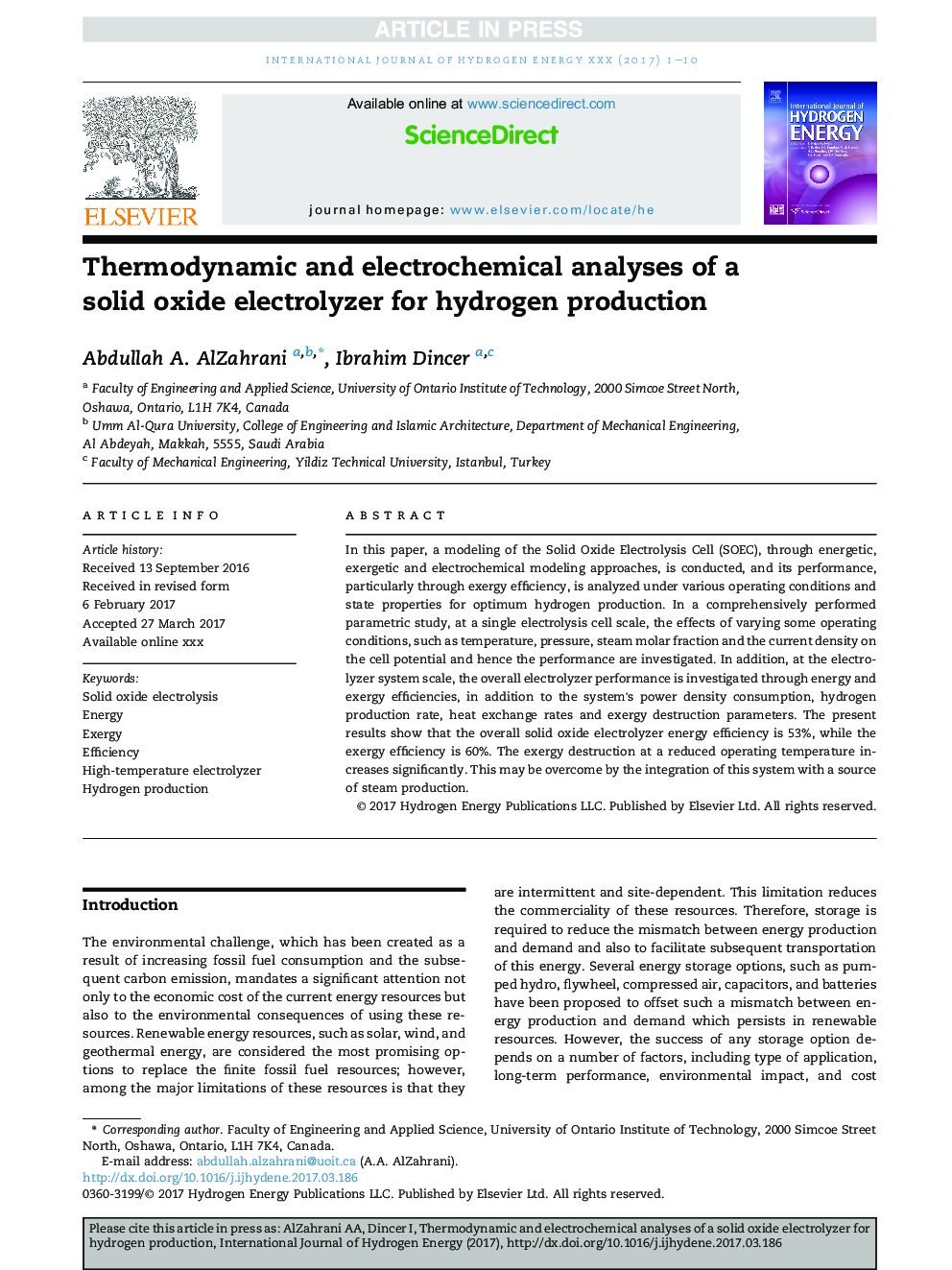| Article ID | Journal | Published Year | Pages | File Type |
|---|---|---|---|---|
| 5145995 | International Journal of Hydrogen Energy | 2017 | 10 Pages |
Abstract
In this paper, a modeling of the Solid Oxide Electrolysis Cell (SOEC), through energetic, exergetic and electrochemical modeling approaches, is conducted, and its performance, particularly through exergy efficiency, is analyzed under various operating conditions and state properties for optimum hydrogen production. In a comprehensively performed parametric study, at a single electrolysis cell scale, the effects of varying some operating conditions, such as temperature, pressure, steam molar fraction and the current density on the cell potential and hence the performance are investigated. In addition, at the electrolyzer system scale, the overall electrolyzer performance is investigated through energy and exergy efficiencies, in addition to the system's power density consumption, hydrogen production rate, heat exchange rates and exergy destruction parameters. The present results show that the overall solid oxide electrolyzer energy efficiency is 53%, while the exergy efficiency is 60%. The exergy destruction at a reduced operating temperature increases significantly. This may be overcome by the integration of this system with a source of steam production.
Related Topics
Physical Sciences and Engineering
Chemistry
Electrochemistry
Authors
Abdullah A. AlZahrani, Ibrahim Dincer,
